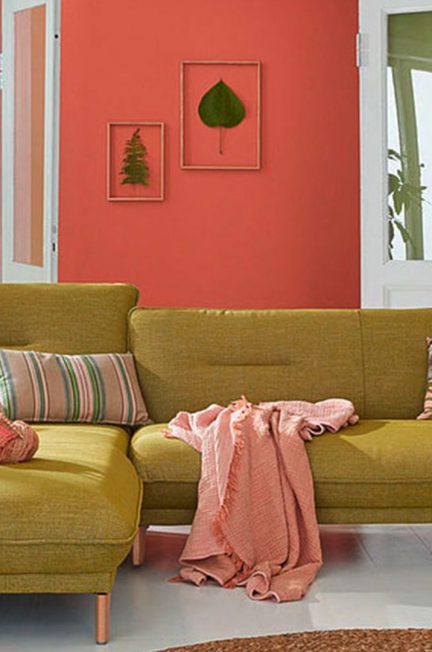Ceiling lights play a crucial role in interior design, as they not only provide illumination but also enhance the ambiance of a space. Whether you’re designing a cozy living room, a stylish dining area, or a functional workspace, the right ceiling light can make all the difference. It sets the tone for the room and adds a touch of elegance and sophistication. Ceiling lights come in various types, sizes, styles, and finishes, allowing you to find the perfect fit for your space. In this article, we will explore the different types of ceiling lights, how to choose the right size and style, how to match your ceiling light to your decor, installation tips and tricks, maintenance and cleaning guidelines, energy efficiency options, creative ways to use ceiling lights, current trends in ceiling lighting design, and why a stunning ceiling light is the perfect finishing touch for your space.
Types of Ceiling Lights: Which One is Right for Your Space?
When it comes to ceiling lights, there are several types to choose from. The most common types include flush mount lights, semi-flush mount lights, chandeliers, pendant lights, track lighting, and recessed lighting. Each type has its own unique characteristics and advantages.
Flush mount lights are fixtures that are mounted directly against the ceiling without any gap between the fixture and the ceiling. They provide a clean and streamlined look and are ideal for rooms with low ceilings or limited space. Semi-flush mount lights are similar to flush mount lights but have a small gap between the fixture and the ceiling. This allows for more airflow and can create a more dramatic effect.
Chandeliers are elegant and sophisticated ceiling lights that often serve as a focal point in a room. They feature multiple arms or branches with decorative elements such as crystals or glass shades. Chandeliers are commonly used in dining rooms, entryways, or grand living spaces.
Pendant lights are suspended from the ceiling by a cord, chain, or rod. They come in various shapes and sizes and can be used as a single statement piece or in a group to create a visually stunning effect. Pendant lights are versatile and can be used in almost any room, from kitchens to bedrooms.
Track lighting consists of multiple light fixtures mounted on a track that can be adjusted to direct light in different directions. It is often used in galleries or spaces where adjustable lighting is required. Recessed lighting, also known as can lights or downlights, is installed into the ceiling and provides a sleek and minimalist look. It is commonly used for general lighting or to highlight specific areas or objects.
Each type of ceiling light has its pros and cons. Flush mount and semi-flush mount lights are great for low ceilings or small spaces but may not provide as much light as other types. Chandeliers add elegance and drama but may require higher ceilings and more maintenance. Pendant lights offer versatility and style but may not provide sufficient illumination on their own. Track lighting allows for adjustable lighting but may require more installation work. Recessed lighting provides a clean and minimalist look but may require professional installation.
Choosing the Right Size and Style for Your Ceiling Light
Choosing the right size and style of ceiling light is essential to ensure it fits seamlessly into your space and complements your decor. When determining the appropriate size for your space, consider the dimensions of the room, the height of the ceiling, and the purpose of the light fixture.
For rooms with low ceilings or limited space, flush mount or semi-flush mount lights are ideal as they sit close to the ceiling and do not take up much vertical space. Measure the height of your ceiling to determine how far down the fixture should hang. As a general rule, leave at least 7 feet of clearance between the bottom of the fixture and the floor to avoid any potential hazards.
When it comes to style, consider the overall theme and decor of your space. If you have a modern or contemporary style, opt for sleek and minimalist designs with clean lines and metallic finishes. For a more traditional or vintage look, choose fixtures with ornate details, warm finishes, and decorative elements such as crystals or glass shades. It’s important to select a style that complements the existing decor and creates a cohesive look.
Tips for selecting the perfect ceiling light for your room include considering the function of the space. For example, in a kitchen or workspace where task lighting is important, choose fixtures that provide bright and focused light. In a bedroom or living room where ambient lighting is desired, opt for fixtures that provide a softer and more diffused light. Additionally, consider the size of the room and the scale of the furniture. A small fixture may get lost in a large room, while an oversized fixture may overwhelm a small space.
Materials and Finishes: How to Match Your Ceiling Light to Your Decor
The materials and finishes of your ceiling light can greatly impact the overall aesthetic of your space. Popular materials for ceiling lights include metal, glass, crystal, fabric, and wood. Each material has its own unique characteristics and can create a different look and feel.
Metal is a versatile material that can be used in various styles of ceiling lights. It can be finished in different ways, such as polished chrome for a modern look or aged brass for a vintage feel. Glass is another popular material that adds elegance and sophistication to a space. It can be clear for a sleek and minimalist look or frosted for a softer and more diffused light.
Crystal is often associated with luxury and opulence. Crystal chandeliers are timeless classics that add sparkle and glamour to any room. Fabric is commonly used in pendant lights or chandeliers to create softness and warmth. It can be in the form of lampshades or fabric-wrapped cords. Wood is a natural and organic material that adds warmth and texture to a space. It is often used in pendant lights or chandeliers to create a rustic or farmhouse look.
When coordinating your ceiling light with other fixtures and decor in the room, consider the finishes and materials used throughout the space. Aim for a cohesive look by selecting fixtures that have similar finishes or materials. For example, if you have brushed nickel hardware in the room, choose a ceiling light with a brushed nickel finish to tie everything together. If you have wooden furniture, opt for a ceiling light with wood accents or a natural finish.
Tips for achieving a cohesive look with your ceiling light include considering the overall color palette of the room. Choose a fixture that complements the existing colors and finishes. Additionally, consider the style of your space. If you have a modern or contemporary style, choose fixtures with clean lines and metallic finishes. If you have a traditional or vintage style, opt for fixtures with ornate details and warm finishes.
Installing Your Ceiling Light: Tips and Tricks for a Seamless Process
Installing a ceiling light may seem like a daunting task, but with the right tools and instructions, it can be a relatively straightforward process. Before starting the installation, it’s important to prepare properly to ensure a seamless process.
First, gather all the necessary tools and materials, including a ladder, wire cutters, wire connectors, electrical tape, a voltage tester, and the appropriate screws or mounting hardware for your specific fixture. Make sure to turn off the power to the circuit at the breaker box before starting any electrical work.
Next, remove the existing light fixture if there is one. This typically involves unscrewing the mounting bracket and disconnecting the wires. Use a voltage tester to ensure that there is no power running to the wires before touching them.
Follow the step-by-step instructions provided with your specific ceiling light to install the new fixture. This may involve attaching the mounting bracket to the ceiling, connecting the wires, and securing the fixture in place. Make sure to follow all safety guidelines and consult a professional if you are unsure about any step of the process.
Common mistakes to avoid during installation include not turning off the power before starting any electrical work, not properly securing the mounting bracket to the ceiling, and not properly connecting the wires. It’s important to take your time and double-check all connections and fixtures to ensure a safe and secure installation.
Maintenance and Cleaning: Keeping Your Ceiling Light in Top Shape

To keep your ceiling light in top shape, regular maintenance and cleaning are essential. The specific cleaning method will depend on the type of ceiling light you have.
For flush mount or semi-flush mount lights, simply dusting the fixture regularly with a soft cloth or feather duster should be sufficient. If there are any glass or crystal elements, use a glass cleaner or a mixture of water and vinegar to remove any smudges or fingerprints.
Chandeliers require a bit more maintenance due to their intricate design. Start by turning off the power to the fixture and allowing it to cool down if it has been recently used. Remove any glass or crystal elements and clean them separately using a glass cleaner or a mixture of water and vinegar. Use a soft cloth or feather duster to dust the frame of the chandelier. If there are any stubborn stains or dirt, use a mild soap solution and a soft brush to gently scrub the affected areas. Make sure to dry all components thoroughly before reassembling the chandelier.
Pendant lights can be cleaned in a similar way to chandeliers, depending on their design. Remove any glass or fabric elements and clean them separately using appropriate cleaning solutions. Dust the frame of the pendant light with a soft cloth or feather duster.
Track lighting and recessed lighting can be cleaned by dusting the fixtures regularly with a soft cloth or feather duster. If there are any stubborn stains or dirt, use a mild soap solution and a soft brush to gently scrub the affected areas. Make sure to dry the fixtures thoroughly before turning the power back on.
To maintain the quality and appearance of your ceiling light, it’s important to avoid using harsh chemicals or abrasive materials that can damage the finish or components. Additionally, make sure to follow all safety guidelines and consult a professional if you are unsure about any maintenance or cleaning procedures.
Energy Efficiency: How to Save Money and Reduce Your Carbon Footprint
In today’s world, energy efficiency is becoming increasingly important. Not only does it help save money on electricity bills, but it also reduces our carbon footprint and helps protect the environment. When it comes to ceiling lights, there are several energy-efficient options available.
LED (light-emitting diode) lights are one of the most energy-efficient options for ceiling lights. They use significantly less energy than traditional incandescent or fluorescent bulbs and have a much longer lifespan. LED lights also produce less heat, making them safer and more environmentally friendly.
When selecting an LED ceiling light, look for fixtures that are ENERGY STAR certified. ENERGY STAR is a program that identifies products that meet strict energy efficiency guidelines set by the U.S. Environmental Protection Agency (EPA). These fixtures have been tested and proven to use less energy without sacrificing performance or quality.
To calculate the energy usage of your ceiling light, you can refer to the wattage rating of the bulb or fixture. Multiply the wattage by the number of hours the light is used per day to get the daily energy consumption. Multiply this by 30 to get the monthly energy consumption. You can then calculate the cost by multiplying the monthly energy consumption by your electricity rate.
Tips for reducing your energy consumption and saving money on your electricity bill include using dimmer switches or timers to control the amount of light used, installing motion sensors or occupancy sensors to automatically turn off lights when not in use, and choosing fixtures with built-in energy-saving features such as LED bulbs or adjustable brightness settings.
Creative Ways to Use Ceiling Lights: Beyond Basic Illumination
Ceiling lights can be used in creative ways to go beyond basic illumination and add a unique touch to your space. Here are a few ideas:
1. Highlight artwork or architectural features: Use track lighting or recessed lighting to highlight artwork or architectural features such as a fireplace, a bookshelf, or a statement wall. This creates a focal point and adds visual interest to the room.
2. Create a focal point with a unique ceiling light: Choose a ceiling light that stands out and becomes the focal point of the room. This could be a chandelier with an intricate design, a pendant light with a bold color or shape, or a cluster of pendant lights arranged in an interesting pattern.
3. Incorporate ceiling lights into unexpected spaces: Don’t limit ceiling lights to traditional spaces such as living rooms or bedrooms. Consider incorporating them into unexpected spaces such as closets, bathrooms, or even outdoor areas. This adds functionality and style to these often overlooked spaces.
Trends in Ceiling Lighting: What’s New and Popular in 2021
Ceiling lighting trends are constantly evolving, and 2021 is no exception. Here are some popular styles and finishes for ceiling lights this year:
1. Minimalist designs: Clean lines, simple shapes, and minimalist designs are on-trend this year. Flush mount or semi-flush mount lights with sleek finishes such as brushed nickel or matte black are popular choices for modern and contemporary spaces.
2. Natural materials: With a growing focus on sustainability and eco-friendly design, natural materials such as wood and rattan are gaining popularity in ceiling lighting. Pendant lights with wooden accents or chandeliers with rattan shades add warmth and texture to a space.
3. Mixed metals: Mixing different metal finishes is a trend that adds visual interest and depth to a room. Combining brushed brass with polished chrome or matte black with antique bronze creates a modern and eclectic look.
4. Oversized fixtures: Statement-making oversized fixtures are making a comeback this year. Large chandeliers or pendant lights with multiple bulbs or intricate designs create a dramatic effect and become the focal point of the room.
5. Geometric shapes: Geometric shapes such as hexagons, triangles, and diamonds are popular in ceiling lighting design. These shapes add a contemporary and modern touch to any space.
To incorporate current trends into your own space, consider updating your existing ceiling lights with fixtures that reflect the latest styles and finishes. You can also mix and match different types of ceiling lights to create a unique and personalized look. Don’t be afraid to experiment with different shapes, sizes, and materials to find the perfect fit for your space.
Why a Stunning Ceiling Light is the Perfect Finishing Touch for Your Space
In conclusion, ceiling lights play a crucial role in interior design by providing illumination and enhancing the ambiance of a space. The right ceiling light can transform a room from ordinary to extraordinary, adding elegance, style, and sophistication. With various types, sizes, styles, and finishes available, there is a perfect ceiling light for every space.
When selecting a ceiling light, consider the size and style that best suits your space and complements your existing decor. The size of the ceiling light should be proportional to the room it will be installed in. For smaller spaces, such as bedrooms or bathrooms, a flush mount or semi-flush mount light may be more appropriate. These types of lights are close to the ceiling and provide a sleek and compact look. In larger rooms, such as living rooms or dining areas, a chandelier or pendant light can add a touch of elegance and serve as a focal point. Additionally, consider the style of the ceiling light and how it will blend with your existing decor. Whether your space has a modern, traditional, or eclectic design, there are a variety of ceiling light styles available to suit your taste. From sleek and minimalist designs to ornate and decorative fixtures, choose a style that enhances the overall aesthetic of your space.



